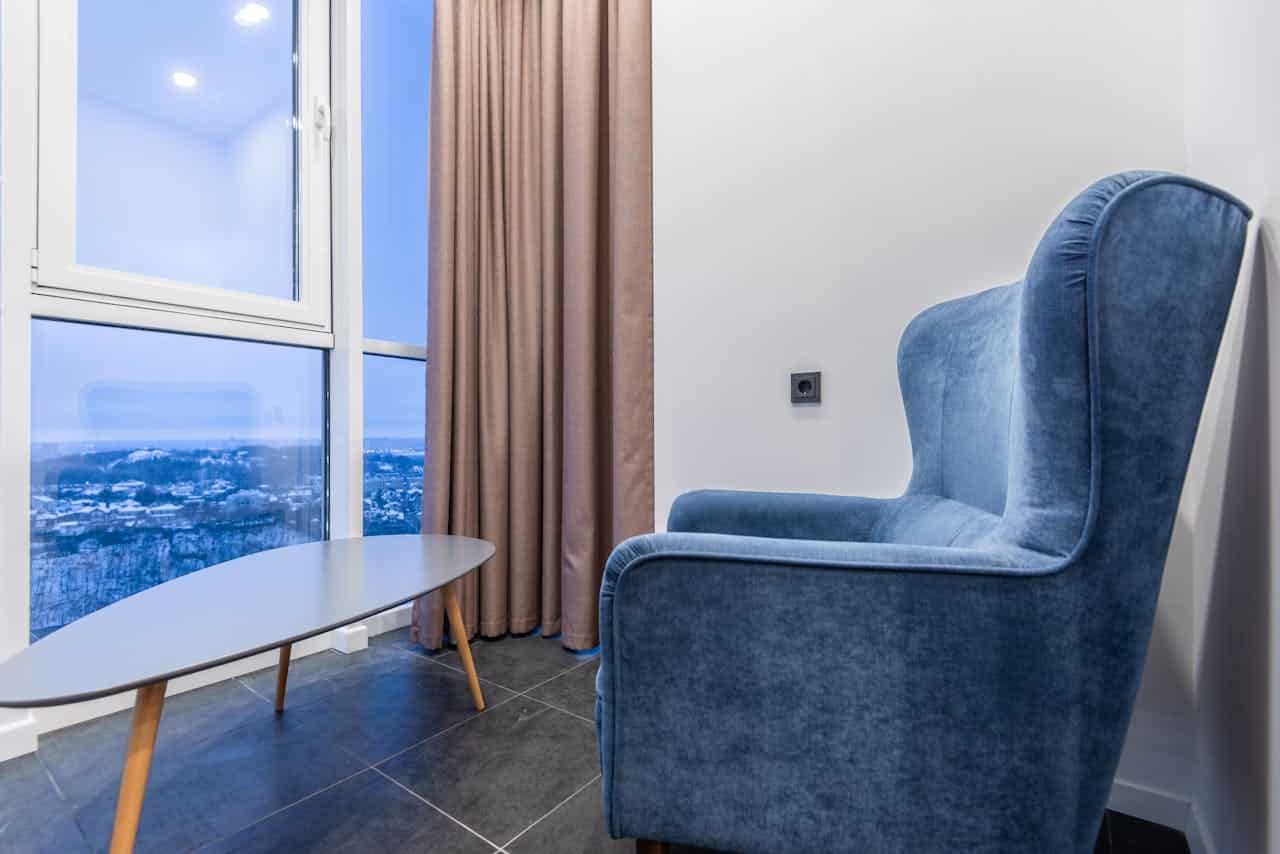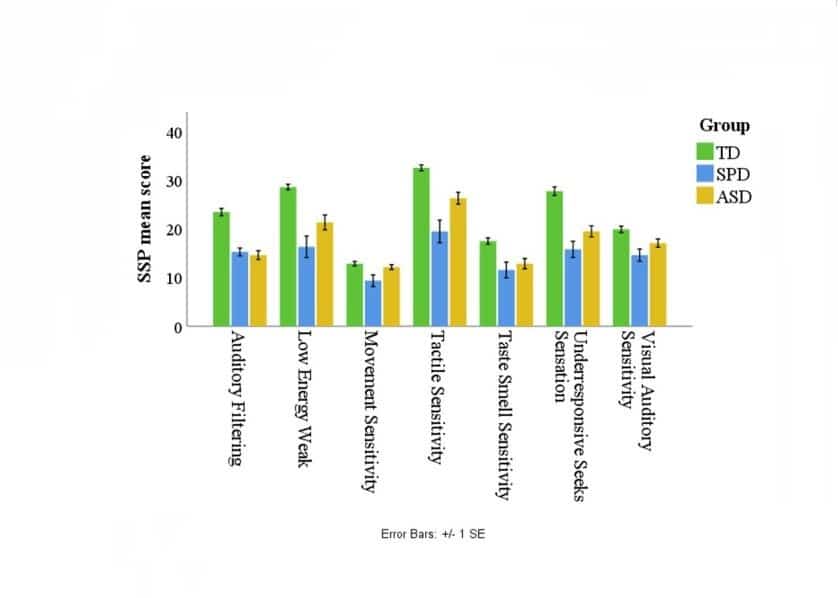As a parent, watching your child struggle with sensory challenges can be heart-wrenching. Maybe you’ve seen your little one cover their ears during family gatherings, or perhaps they become overwhelmed at the grocery store. These moments can feel isolating, but you’re not alone on this journey. Understanding how ABA therapy and sensory issues support work together can open new doors for your child’s development, bringing hope and practical solutions to your daily life.
Understanding Autism Spectrum Disorder and Sensory Challenges
Before we explore solutions, let’s take a moment to understand the connection between autism spectrum disorder and sensory experiences. Think of your child’s sensory system as a unique musical instrument – one that plays life’s symphony differently than others might.
16% is the highest estimate for individuals with SPD in the US, however, since SPD is not included in DSM-5 or ICD, the estimate ranges between 5%-16%.
Success Stories
“Move Up ABA has been a lifeline for our family. Before starting therapy, our son struggled with daily routines and communication. Now, he’s more independent and even initiated a conversation with a classmate for the first time! The progress we’ve seen in just six months is truly remarkable.”
- Emily R., Silver Spring, Accountant
“As a single dad, I was overwhelmed trying to manage my child’s behavior. The Move Up ABA team not only provided amazing support for my little girl but also taught me practical strategies to use at home. Their in-home sessions fit perfectly with our busy schedule. I’m so grateful for their patience and expertise.”
- Michael T., Rockville, Middle School Teacher
“We were hesitant about starting ABA therapy, but Move Up ABA’s approach put us at ease from day one. Our twins have made incredible strides in their social skills and self-regulation. The therapists are like extended family now, and we couldn’t be happier with our decision to work with them.”
- Aisha and James L., Simpson, Police Officers
Children on the autism spectrum frequently experience distinctive responses to sensory stimuli in their environment. These sensory sensitivities can affect how they:
Process everyday sensory input
Respond to environmental changes
Engage with their surroundings
Participate in daily activities
Connect with others
Understanding this delicate interplay helps us create more effective support strategies. But what exactly happens when sensory processing works differently?
What is Sensory Processing Disorder? Breaking It Down
Imagine your brain as a traffic controller, managing all the information coming from your senses.

For children with sensory processing disorder, this traffic controller might get overwhelmed or work differently. This understanding helps explain why your child might experience these everyday challenges:
Getting distressed by clothing tags or seams
Covering ears when the vacuum cleaner runs
Refusing to walk on grass or sand
Being uncomfortable with certain food textures
Becoming overwhelmed by bright lights in stores
These reactions aren’t just random behaviors – they’re your child’s way of communicating their sensory needs. As we explore these patterns, you’ll start to recognize them in your daily routines.
How Sensory Processing Difficulties Show Up in Daily Life
Every child’s sensory landscape is unique, much like a fingerprint. Think about your typical day – how many sensory experiences do you and your child navigate together? You might notice these patterns:
Morning Routines: Struggles with toothbrushing or hair washing
Mealtimes: Difficulties with food textures or using utensils
Playtime: Avoiding certain toys or textures
School: Challenges with noise levels or sitting still
Social Settings: Becoming overwhelmed at birthday parties or playgrounds
Recognizing these patterns or symptoms is your first step toward positive change. Now, let’s explore how we can create an environment that supports your child’s unique sensory needs.
Creating a Nurturing Environment Through Positive Reinforcement
Now that we understand how sensory challenges affect your child’s daily life, let’s explore how to create an environment that supports their growth. Just as a garden needs the right conditions to flourish, your child needs an atmosphere that encourages positive behaviors. Through carefully designed positive reinforcement strategies, we help children:
Adapt to new sensory experiences at their own pace
Build confidence in challenging situations
Develop effective coping mechanisms
Reinforce positive responses to sensory input
Celebrate small victories along the way
As your child experiences success in this nurturing environment, we can begin to introduce more structured approaches to support their development.
Integrating Sensory Focused Interventions with Behavior Modification
Building on the foundation of a supportive environment, our comprehensive approach combines sensory integration techniques with proven behavior modification strategies. Think of it as creating a personalized roadmap for your child’s success. This carefully integrated approach helps children:
Process sensory information more effectively
Develop adaptive behaviors for challenging situations
Build essential life skills step by step
Respond positively to sensory challenges
Make significant improvements in daily functioning
But how do we tailor these strategies to your child’s unique needs?
Personalized Strategies for Skill Development
Every child’s journey is as unique as their fingerprint, which is why we create personalized strategies that target specific areas of skill development. Like pieces of a puzzle coming together, our approach focuses on helping children:
Communicate effectively in various situations
Navigate sensory challenges independently
Build meaningful social connections
Master daily living skills
Develop self-regulation techniques
These personalized strategies lay the groundwork for our next powerful tool: sensory integration therapy.
The Magic of Sensory Integration Therapy
Think of sensory integration therapy as teaching your child’s brain to be a better traffic controller. At Move Up ABA, we create engaging activities that help children process sensory inputs more effectively. Our approach includes:
Fun, structured activities that build sensory tolerance
Games that develop body awareness
Activities that strengthen sensory processing
Exercises that boost confidence
Experiences that encourage exploration
As these foundational skills develop, we can enhance them further through specialized ABA techniques.
ABA Therapy Programs: Making Sense of Sensory Challenges
While sensory integration therapy builds the foundation, ABA therapy adds another crucial layer of support. Our ABA techniques work hand-in-hand with sensory focused interventions to create a comprehensive approach. This integration helps us:
Design targeted behavioral strategies
Teach coping mechanisms systematically
Build communication skills progressively
Address challenges methodically
Track and celebrate progress
But how can you support these strategies at home?
Building Your Home Sensory Diet: Practical Tips
Just as your body needs a balanced diet of nutrients, your child’s sensory system needs a balanced “diet” of sensory experiences. Think of this as creating a customized menu of activities that help your child stay regulated throughout the day. Here’s how to structure this sensory diet at home:
Morning Activities:
Start with heavy work (carrying laundry basket, pushing grocery cart)
Do wall pushes or animal walks
Use a therapy ball for bouncing
Throughout the Day:
Schedule regular sensory breaks

Offer fidget toys during quiet activities
Provide opportunities for climbing and jumping
Use weighted items (blankets, stuffed animals)
Evening Wind-Down:
Deep pressure activities (gentle squeezes, bear hugs)
Calming sensory bottle play
Quiet corner time with soft lighting
As you implement these strategies, you might wonder: when is the best time to start this journey?
Early Intervention: Why Timing Matters
Think of early intervention like planting a garden – the sooner you begin, the stronger the roots will grow. As you incorporate these strategies at home and in therapy, you might notice these early signs that indicate your child could benefit from support:
Unusual responses to sounds, textures, or movements
Difficulty with transitions between activities
Challenges with motor skills or coordination
Struggles with daily living skills
Limited food preferences
Recognizing these signs early allows us to build a strong foundation. But how do we turn this recognition into action?
Building Success Through Behavioral Interventions
Like building blocks stacking together, our structured interventions combine sensory support with behavioral strategies to create lasting change. This comprehensive approach includes:
Consistent reinforcement strategies that celebrate progress
Clear behavioral expectations that guide growth
Positive reinforcement techniques that build confidence
Adaptive behavior development for real-world success
Regular progress monitoring and strategy adjustment
As these behavioral foundations strengthen, we can add another powerful element: physical movement.
Physical Exercises for Sensory Integration
Movement isn’t just exercise – it’s medicine for the sensory system. Physical exercises play a crucial role in helping children process sensory input and develop body awareness. Our program includes:
Structured movement activities that build confidence
Sensory integration exercises that improve processing
Balance and coordination activities that enhance body awareness
Strength-building exercises that support daily activities
Body awareness activities that promote self-regulation
These physical activities naturally lead us to consider how to create an optimal environment at home.
The chart below compares group differences in the mean response of each group for each of the seven sensory domains of the Short Sensory Profile (SSP). The groups of children (ages 6-10 years) included are TD (Typically Developing), SPD (Sensory Processing Disorder), and ASD (Autistic Spectrum Disorder).

Source: National Library of Medicine
Making Sensory Focused Interventions Work at Home
Your home can become a therapeutic space where every room supports your child’s sensory needs. Imagine creating a space that’s both comforting and encouraging:
Designate a calm-down corner with soft cushions and dimmed lights
Set up a mini sensory gym with climbing options
Stock sensory toys for different needs (squeezable, visual, auditory)
Create texture stations for sensory exploration
Use visual schedules to support transitions
But remember, you’re not alone in this journey. That’s where professional support comes in.
Working with Occupational Therapists: A Team Approach
Success comes from collaboration, like an orchestra playing in harmony. Our ABA therapists work hand-in-hand with occupational therapists to:
Design comprehensive treatment plans
Address fine and gross motor skills
Develop handwriting abilities
Improve daily living skills
Support school readiness
This teamwork extends beyond therapy sessions into every aspect of your child’s day.
Creating a Sensory-Smart Home Environment
Just as you would child-proof a home for a toddler, you can “sensory-proof” your space to support your child’s needs. Building on our therapeutic strategies, let’s transform your living space into a sensory-supportive haven. Just as a garden needs the right conditions to flourish, your child needs an environment that helps them thrive:
Use soft lighting options to reduce visual stress
Create quiet zones for necessary sensory breaks
Provide movement opportunities throughout the space
Organize visual spaces to reduce overwhelm
Include calming sensory elements in each room
With these environmental supports in place, we can focus on an equally important skill: managing sensory challenges as they arise.
Managing Sensory Overload: Prevention and Response
Even in the most thoughtfully designed environment, sensory overload can occur – like a cup that slowly fills until it overflows. The key is learning to recognize the signs before reaching that point.
Think of it like watching a weather forecast – there are usually signs before the storm:

Watch for early signs of increasing stress
Notice environmental triggers that build up
Recognize subtle body language changes
Understand your child’s unique verbal cues
Observe patterns in behavioral shifts
Understanding these signals leads us naturally to our next crucial step: helping your child express their needs effectively.
Building Communication Through Sensory Awareness
Communication is like building a bridge between your child’s experience and the outside world. When children can express their sensory needs, they gain more control over their experiences. Consider these strategies:
Use visual cards for expressing sensory preferences
Practice simple sensory check-ins throughout the day
Teach self-advocacy phrases for challenging situations
Create clear comfort signals for overwhelming moments
Establish easy-to-use safe words for sensory overload
As communication skills grow, we can expand your child’s world through meaningful social connections.
Supporting Social Skills Through Sensory Understanding
Social interactions are like a dance – they require awareness of ourselves and others. As your child becomes more comfortable with their sensory experiences, they develop better social skills:
Practice greetings with different sensory levels
Role-play common social scenarios safely
Use social stories about sensory experiences
Build meaningful social connections gradually
Create successful playdate strategies together
These social successes naturally lead to better emotional regulation and reduced anxiety.
Managing Anxiety Through Sensory Support
When children feel understood and supported in their sensory needs, anxiety often decreases naturally. Think of it as giving your child tools for their emotional toolbox:
Deep breathing exercises for calm
Progressive muscle relaxation techniques
Mindful movement activities that ground
Calming sensory tools for tough moments
Structured sensory breaks throughout the day
As these tools become familiar, you’ll likely notice positive changes across many areas of life.
Measuring Progress and Celebrating Success
Progress in sensory integration is like watching a garden grow – some changes are subtle, while others are dramatic. As we implement these various strategies, we carefully track improvements across multiple areas:
Response to previously challenging sensory stimuli
Development of positive behaviors
Ability to communicate effectively
Success with adaptive behaviors
Overall skill development and independence
These achievements build the foundation for long-term success.
Creating Long-Term Success Through Partnership
Our approach to supporting children on the autism spectrum involves creating a nurturing environment that extends beyond therapy sessions. Like building a strong house, each component supports the others:
Implement personalized strategies at home
Reinforce positive responses consistently
Maintain structured interventions
Support ongoing skill development
Celebrate progress together as a team
The Impact on Daily Life: Success Stories

The journey of sensory integration through ABA therapy often leads to remarkable transformations.
Parents who partner with Move Up ABA frequently share stories of:
Improved participation in family activities
Better performance at school
More confident social interactions
Increased independence in daily tasks
Stronger communication skills
These successes remind us that every step forward, no matter how small, is worth celebrating.
ABA Therapy and Sensory Issues: Taking the First Step
Every parent’s journey is unique, just like every child’s sensory needs are different. At Move Up ABA, we understand the challenges you’re facing, and we’re here to help create a personalized path forward. Our Maryland-based team specializes in combining ABA techniques with sensory-smart strategies to support your child’s development.
We’re not just about therapy – we’re about building partnerships with families like yours. Whether you’re just starting to explore options or looking for more comprehensive support, we’re here to listen, understand, and help.
Ready to discover how we can support your child’s journey? Let’s talk about creating a personalized plan that considers your child’s unique sensory needs and your family’s goals. Contact Move Up ABA today – because every child deserves to feel comfortable and confident in their world.
400 E Pratt St, Floor 8 Baltimore , Maryland 21202, United States
Questions?
Email Us: intake@moveupaba.com
Call Us: (410) 469-1090






